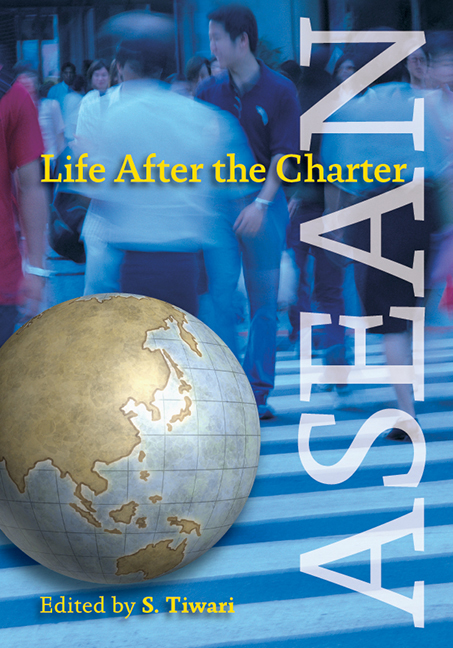Book contents
- Frontmatter
- Contents
- Foreword
- Preface
- List of Contributors
- Introduction
- 1 ASEAN Legal Personality under Its New Charter – Its Nature, Meaning and Implications: Status of the Work and Issues Involved
- 2 Does ASEAN Exist? The Association of Southeast Asian Nations as an International Legal Person
- 3 Life in ASEAN After the Entry into Force of the ASEAN Charter: Implications and Follow-ups
- 4 Translating the Design into a Bloc: The Domestic Implementation of the ASEAN Charter
- 5 ASEAN Trade in Goods Agreement (ATIGA)
- 6 The ASEAN Comprehensive Investment Agreement 2009: Its Objectives, Plans and Progress
- PRIVATE SECTOR PERSPECTIVES
- Index
4 - Translating the Design into a Bloc: The Domestic Implementation of the ASEAN Charter
Published online by Cambridge University Press: 21 October 2015
- Frontmatter
- Contents
- Foreword
- Preface
- List of Contributors
- Introduction
- 1 ASEAN Legal Personality under Its New Charter – Its Nature, Meaning and Implications: Status of the Work and Issues Involved
- 2 Does ASEAN Exist? The Association of Southeast Asian Nations as an International Legal Person
- 3 Life in ASEAN After the Entry into Force of the ASEAN Charter: Implications and Follow-ups
- 4 Translating the Design into a Bloc: The Domestic Implementation of the ASEAN Charter
- 5 ASEAN Trade in Goods Agreement (ATIGA)
- 6 The ASEAN Comprehensive Investment Agreement 2009: Its Objectives, Plans and Progress
- PRIVATE SECTOR PERSPECTIVES
- Index
Summary
INTRODUCTION
The ASEAN Charter was signed on 20 November 2007 at the 13th ASEAN Summit in Singapore and it entered into force on 15 December 2008 on the 30th day after all ten ASEAN member states submitted instruments of ratification to the ASEAN Secretary-General. While the Charter does take the important step of conferring legal personality on ASEAN, it does not completely resolve all the concerns regarding the implementation of the Charter itself.
The implementation problems may arise from three main areas. First, a lack of political will at the state level to implement the treaty. Second, at the domestic level, if the domestic laws are either not in conformity with the treaty or are silent with regard to treaty norms or obligations, the domestic courts applying those laws may not enforce the obligations of the treaty. Finally, there may be administrative structural problems preventing the obligations of the treaty from being applied at the ground level. It is beyond the scope of this chapter to deal with the latter as that will require surveys and interviews at the ground level of each of the ten ASEAN member states for each specific obligation. Instead, it will focus on the former two problems.
In this regard, the terminology used by Brown Weiss and Jacobson regarding strategies for encouraging state compliance with environmental law may be helpful. Using a matrix of “intention” and “capacity”, they suggest that a policy toolkit of sanctions, incentives, and “sunshine” can be part of a strategy to strengthen state compliance. Their empirical study showed that where intention and capacity of states to comply were strong, sunshine was the most appropriate tool. Merely highlighting the problem was sufficient as the states usually were able to quickly resolve the issue. However, where capacity was weaker, incentives were necessary to increase the capacity.
- Type
- Chapter
- Information
- ASEANLife after the Charter, pp. 66 - 88Publisher: ISEAS–Yusof Ishak InstitutePrint publication year: 2010



